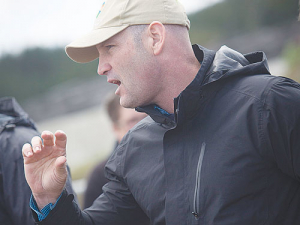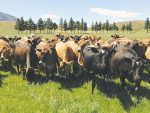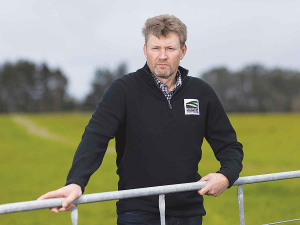Ideal growing conditions in many places — despite record autumn rains — have delayed cow culls, allowing some herd managers to optimise their herds for next season.
Latest data from processors show cull cow numbers were well down on last year; Meat Board data showed the national cow kill was 28% behind a year ago from October to early April.
Last year processors reported about 1.1 million cull cows, driven in part by a national ‘cleanout’ of poor performing dairy cows because of cost cutting pressure in the dairy sector.
Exceptional late autumn growth in many places prompted farmers to milk empty cows for longer, hence the lower kill numbers to early April.
However DairyNZ research from 2003 analysed production from 154 identical twin cows -- one twin pregnant and the other empty.
Milk yield in the pregnant cows was not less than the empty twin until 250 days into lactation, by which time the pregnant twin was only yielding 0.1kg MS per day less than the empty one.
But the heavy early autumn rain may have forced many farmers in the upper North Island to cull sooner; uncertainty remains about how many more cows are to yet be processed.
Two factors are likely to be in play here, the most obvious being farmers getting rid of any cow that even ‘looked sideways’ last season. But the more worrying issue is carry-overs’.
My concern is that the reported decline in fertility (through some high empty rates reported in herds) may result in farmers getting into a position where they have to carry over cows to have enough for next season. This raises the issue of ‘voluntary’ versus ‘involuntary’ culls -- the difference between a dollar-sapping event and a happy, profitable one.
The question is, how can we separate these two very distinct outcomes from a single decision? They so often get rolled into one.
The result is that any interpretation of farm data on culling becomes pretty meaningless: if every cull is ‘involuntary’, you can be sure you will be making negligible genetic gain in your herd, particularly if you are selecting for production.
On a recent trip to the US, I saw the importance to farmers there of avoiding involuntary culling; they are focused on total farm productivity gains. Their interest is not on longevity, but on maintaining genetic gain in each generation.
At the core of involuntary culling in NZ often sits metabolic issues of calcium, magnesium, phosphorous.
DairyNZ data indicates that for every downer cow, two more cows have milk fever and 16 more have subclinical milk fever.
Problems arising from this will contribute to involuntary cull decisions, e.g. conditions like metritis, ketosis and mastitis can be caused or exacerbated when a cow has depleted mineral levels.
The really disheartening part is that your high producing cows are more likely to get these diseases. However, the good part is they are completely avoidable, even in a grass based system and in cows with high levels of production.
Effective transition feeding can help reduce the slide in nutrients that can occur prior to calving where deficiencies can culminate in impaired immune function, causing problems including retained placenta and ketosis, post calving.
The additional effect of taking in high levels of potassium, nitrates and ammonia in young spring grass can further reduce cows’ ability to intake calcium.
Improving the health of your herd is a year-round task, but the next four months are the most critical. Over the next few months we will aim to demonstrate the linkages between nutrition and involuntary culling in your herd. We will focus on why these issues occur in your herd, the good ways to spot problems and how to analyse your own system.
• Dr Joe McGrath is Sollus NZ’s head nutritionist.


















